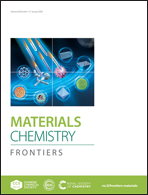Metal porphyrins and metal phthalocyanines as designable molecular model electrocatalysts
Abstract
Metal porphyrins (MP) and metal phthalocyanines (MPc) have precisely tailored structural and electronic properties, and their coordination environment and electronic structure can be optimized at the atomic scale to improve their catalytic performance. Furthermore, MP and MPc are structurally similar to M–N4 single-atom catalysts (SACs), which have shown great potential in the field of electrochemistry due to their high atom utilization and excellent electrocatalytic performance. MP and MPc have the advantages of well-defined M–N4 active sites and can be used as ideal model systems for investigating the catalytic mechanism of M–N4 SACs. In this review, the applications of MP and MPc as model systems for electrocatalysis are summarized systematically. First, the structural characteristics of MP and MPc are introduced. Then, the tailoring, fabrication and modification of MP and MPc as both soluble and insoluble catalysts are presented. The influence of the substituents, axial coordination and complex effects is emphasized. Next, we discuss the construction of practical catalysts (such as metal/covalent organic frameworks) with MP and MPc motifs, and present the electrocatalytic behaviour of different systems. In the following section, the applications of advanced in situ characterization techniques for revealing the interfacial reaction processes and catalytic mechanisms of MP and MPc are discussed. In the end, the challenges and future directions in this field are outlined.

- This article is part of the themed collection: 2023 Materials Chemistry Frontiers Review-type Articles


 Please wait while we load your content...
Please wait while we load your content...